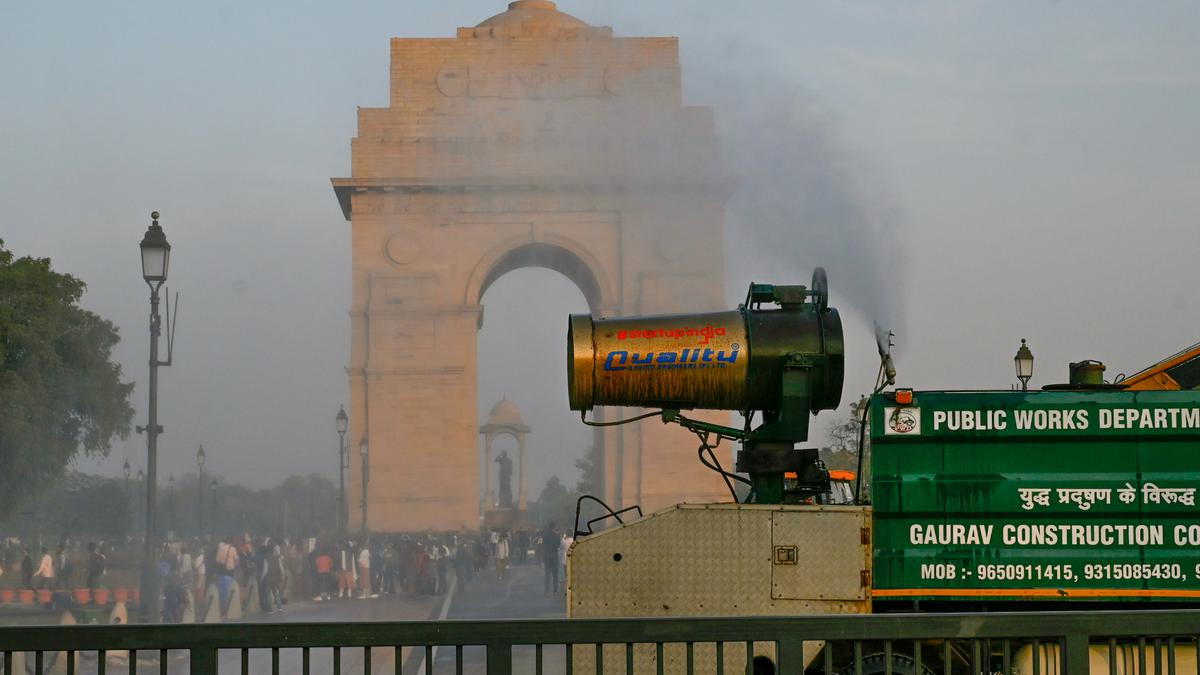
More than half of India’s inhabitants, residing in 344 districts, face excessive or very excessive well being vulnerability induced by local weather change. People are more and more being uncovered to the results of local weather change, comparable to extended summers, heavy and unpredictable rains, floods and droughts, and rising sea ranges and melting glaciers. As a consequence, they fall in poor health extra usually, face a better threat of future illnesses, lose livelihoods, get pushed into poverty, and are compelled emigrate. People struggle and attempt to adapt to those modifications and put together themselves higher for future occasions. Vulnerability is a vector produced out of the dynamics between publicity and sensitivity on the one hand and other people’s capability to adapt or struggle on the opposite.
However, the identical publicity could not have the identical well being penalties for everybody. People who’re uncovered to larger inexperienced cowl, have higher residing circumstances, schooling, secured work, higher social security nets and resilient well being methods would have the ability to adapt to the modifications and mitigate the implications higher. People who dwell on the margins, whose livelihoods are usually not secured, and who need to pay when somebody within the household falls in poor health might be extra weak to those modifications.
Though there are particular common points of local weather change, the character of publicity is various and localised — inside a State, totally different areas or districts have totally different ranges of publicity. As penalties additionally differ, vulnerabilities differ. While there have to be sure common methods, adaptation and mitigation efforts and methods have to be localised.
In a latest paper revealed in Climatic Change, we draw on the vulnerability evaluation framework launched by the Fourth Assessment Report of the Intergovernmental Panel on Climate Change to measure district-level exposures, sensitivities, adaptive capacities (ACs) and well being vulnerabilities. We carried out our evaluation for all 640 districts of India (Census 2011) and used 50 indicators — 14 for publicity, 20 for sensitivity, and 16 for ACs — from 8 nationwide knowledge sources to assemble separate indices for every of the three vulnerability parts.
Our findings recommend that 298 districts have excessive or very excessive ranges of publicity. These districts home round 52% of India’s inhabitants. Almost 30% of India’s inhabitants residing in 184 districts are confronted with very excessive and excessive sensitivity. Around 153 districts, the place a fifth of India’s inhabitants lives, have average and low AC.
The research additionally helps us establish the underlying causes of vulnerability which is crucial in formulating acceptable multi-sectoral coverage responses. For instance, rising public expenditure on well being might have a big affect on decreasing out-of-pocket expenditure. Results recommend that poorly developed major healthcare stays a significant component for top vulnerability in some districts which report excessive toddler mortality charges and poor little one well being indicators. Robust major healthcare has proven promise in successfully addressing preventable causes of mortality and morbidity in lots of States comparable to Kerala and Tamil Nadu. Primary healthcare methods even have the potential to deal with the upcoming burden of non-communicable and communicable illnesses, which is prone to irritate on account of local weather change. By facilitating early illness analysis, major healthcare can scale back the burden of high-cost tertiary care.
Addressing inequalities within the distribution of assorted social determinants of well being might scale back well being vulnerability. Providing sustainable livelihood alternatives, enhancing working circumstances, offering folks with social security nets, and enhancing the schooling standing of the inhabitants and its employability might contribute to decreasing sensitivity and enhancing ACs.
Tractable coverage motion wants a sturdy, dynamic knowledge system. Our present well being system knowledge structure is weak and incomplete. Institutions with entry to knowledge don’t usually collaborate or share knowledge in public. People throughout the system hardly belief the information they themselves generate and barely put the information to make use of. Further, there’s restricted compliance from the personal sector and a scarcity of appreciation inside coverage establishments for evidence-based policymaking.
The local weather disaster requires a radical rethinking of the developmental paradigm. However, none of this may be achieved if establishments of native self-governance are usually not engaged with the local weather and well being agenda. The well being system, too, needs to be made extra accountable to the folks.
Map 1 | The map reveals vulnerability index values for 640 districts (0-0.249 signifies low, 0.25-0.49 signifies average, 0.5-0.749 signifies excessive, and 0.75-1 signifies very excessive vulnerability).
Charts seem incomplete? Click to take away AMP mode
Data present that 38 districts have very excessive vulnerability, 306 districts have excessive vulnerability, 278 districts have average vulnerability, and 18 districts have low vulnerability. The 344 districts with very excessive and excessive vulnerability home 56% of India’s inhabitants.
Table 2 | The desk reveals the highest 5 and backside 5 districts when it comes to vulnerability.
States with districts within the prime 10% vulnerability vary are Uttar Pradesh, Rajasthan, Madhya Pradesh, Jharkhand, Haryana, Himachal Pradesh, Punjab, Uttarakhand, Jammu and Kashmir, and Arunachal Pradesh. U.P. and Rajasthan alone have 37 and 15 districts, respectively, within the prime 10% vulnerability vary, M.P. has 3 districts, and Jharkhand and Haryana have 2 every. Punjab, Uttarakhand, J&Okay, Himachal, and Arunachal have one district every on this class.
Indranil is Professor, on the School of Government and Public Policy, OP Jindal Global University, Sonipat
Divya is a doctoral candidate on the School of Government and Public Policy, OP Jindal Global University, Sonipat
Source: Climatic Change
Also learn: Data | Climate finance provides one other layer of inequity to local weather change
Listen to our Data podcast:Is the Environmental Performance Index actually defective? | Data Point podcast
Source: www.thehindu.com




